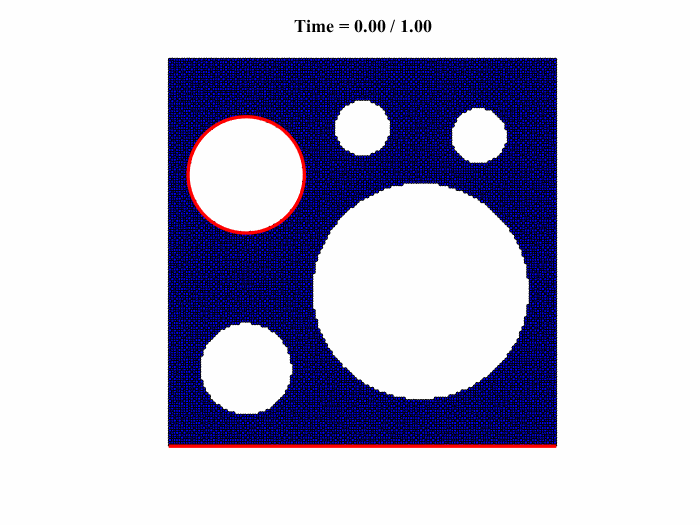Lattice Boltzmann for solids
Many problems in science and engineering are governed by multiple different physics that create complex interactions with each other. A very prominent class of these multi-physics problems involve both fluid and solid phases. For example in additive manufacturing using the laser powder bed fusion process, the metal powder bed is locally molten (and sometimes even evaporated) so that in order to accurately capture the physics involved, we need to model a solid and one or more fluid phases.
Historically, the analysis of solid and fluid mechanics problems is done using quite different numerical methods and/or viewpoints that are each tailored to the properties of ”its” equations. Whereas the finite element method and the Lagrangian frame is predominantly adopted in solid mechanics, the fluid mechanics community primarily works with the finite volume method, Eulerian finite element formulations or the lattice Boltzmann method. As a result, the solution of multi-physics problems often requires the usage of multiple different numerical methods that exchange information during runtime.
This project is motivated by the wish to solve the equations for fluid and solid mechanics in a single framework. For this purpose, we consider the lattice Boltzmann method (LBM), which has its theoretical foundation in gas kinetics. In a nutshell, LBM computes the evolution of a simplified model of a gas that is still complex enough to describe macroscopic fluid flow behavior. Due to its gas kinetic origin, the method comes with some beneficial properties such as algorithmic simplicity and good scaling during parallelization. From an alternative viewpoint, LBM can be considered more generally as a numerical scheme that is able to solve continuity-law type problems. Therefore, in collaboration with colleagues from external page TU Braunschweig, we set out to develop a novel LBM formulation for the governing equations of solid mechanics as well as its boundary conditions.
To start with, we considered the equations for quasi-static linear elasticity in 2D. In order to obtain suitable problem formulation for LBM, the static equilibrium solution is obtained through a diffusion-like process starting from a given initial condition and advancing in pseudo-time. The animation shows this process for a complex 2D domain, where the red boundaries are fully constrained by homogeneous Dirichlet boundary conditions and a constant traction with nonzero horizontal and vertical components is applied at the top surface. With the help of the asymptotic expansion technique we managed to establish second-order accuracy of the method in the bulk as well as for arbitrary curved boundary geometries with Dirichlet and Neumann boundary conditions.

Naturally, the next step is to apply LBM to more dynamical problems, where the time explicit nature of the method can be used to full capacity together with its good suitability for massively-parallel computing architectures. Therefore, our future work aims at developing an accurate and robust formulation for linear elastodynamics.